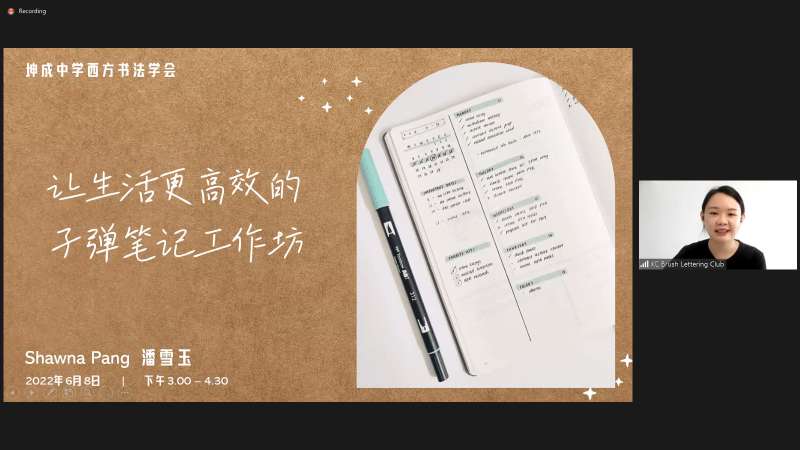Jointly reported by:
Khoo Xin Yi Sr1ScA
Chloe Ling Yen Ee Sr1ScE
“Take note of the past, take hold of the present, and plan the future.” On the 8th of June 2022, the Kuen Cheng Western Calligraphy Club organized a workshop centered around the theme of how to make everyday life even more efficient with a bullet journal. The guest speaker of the workshop was Ms Shawna Pang, a professional calligrapher and bullet journaling artist. The workshop lasted for one and a half hours, from 3:00pm to 4:30pm.
The workshop went about with a few questions raised by Ms Pang, “do you guys use to-do lists to record your tasks?”, and it turns out that most of the participants do plan out their daily lives by using to-do lists. She also asked about the mediums participants used to write to-do lists. Participants responded that notebooks, computer applications and sticky notes were used frequently.
Ms Pang said that using computer applications can cause distractions easily as in just a click or notification, we switch to other platforms and forget our main target. She also said that sticky notes are convenient but can be lost easily. So the best way to organize our plans and to-dos is by using bullet journals, which not only increases discipline, but also sets clear goals. She also mentioned that the person that invented the bullet journal was Ryder Carroll, an Austrian author who used a systematic way to do bullet journaling.
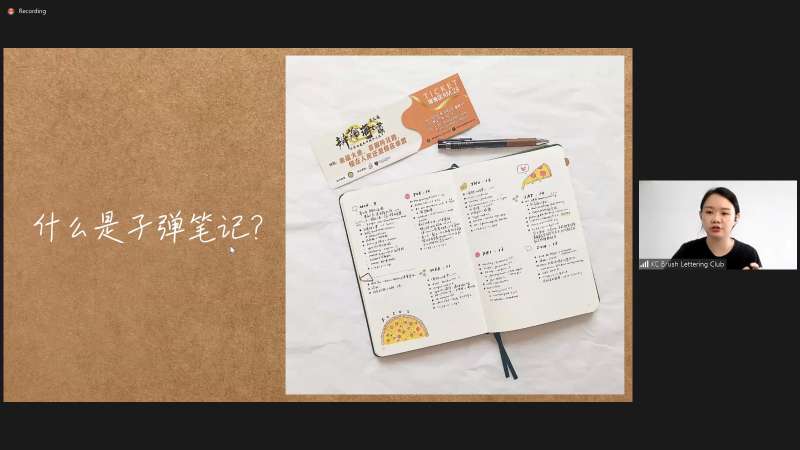
“What is Bullet Journaling?”
The guest speaker mentioned that she used to be forgetful but bullet journals helped her a lot. Bullet journals might seem like a simple thing but it actually has a format. First off, the date needs to be written since it’s like a diary to record the day. All events or tasks are jotted down in point form or else it might seem messy and disorganized. If the points are too heavy, they can be splitted into main points and subpoints. Points are usually expressed in keywords which makes it simple and straight to the point, easy to understand. Adding due dates is definitely a must as it acts as a reminder for forgetful people.
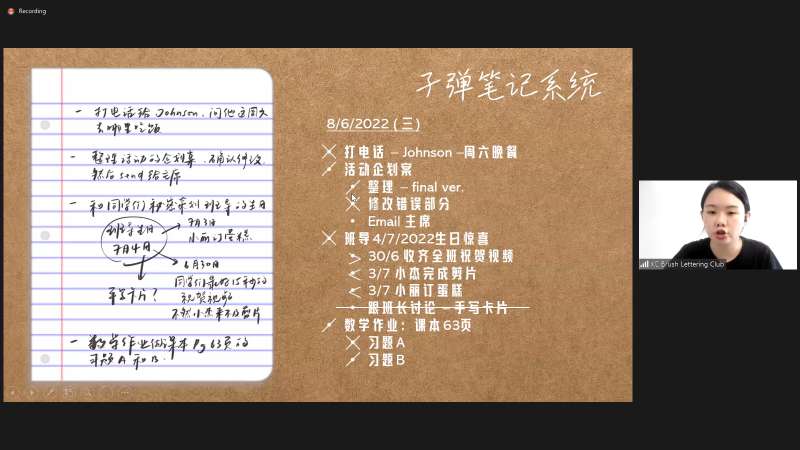
Bullet Journaling System
Bullet journaling can be done throughout the day, or anytime actually. While to-do lists are usually written in the morning, a day before or after assignments have been given etc. This helps to plan ahead for the day and to finish work more efficiently. To-do list can be crossed off after finishing the task to show that you are done with the work. This helps a lot in tracking progress and reviewing what you have accomplished across the day.
As a part of bullet journaling systems, Ms Pang explained that we should use different “keys” such as checkboxes, bullet points, crosses and other symbols in order to mark down different notes or events. She then introduced Ryder Carroll’s own bullet journal key system and compared it with her own.
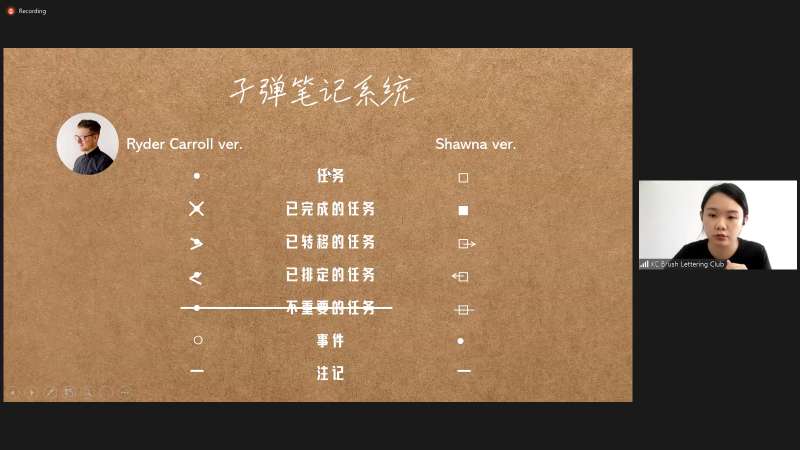
Bullet Journal Key Systems
Moving on, Ms Pang talked about the different factors that make up a bullet journal, including the main 4 sections, namely an index, future log, monthly log and daily log. An index would be much like a table of contents. A future log would state future events in a very concise manner, while a monthly log would do the same but with a to-do list on the side. Meanwhile, daily logs are the most precise and detailed section of a bullet journal. Aside from that, additional sections like yearly goals, motivational sections, spendings charts and more are also perfect for bullet journaling.
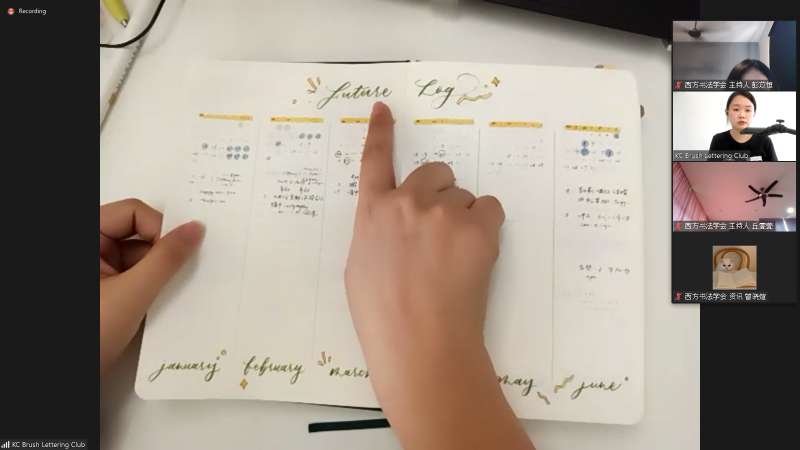
Future Log Example
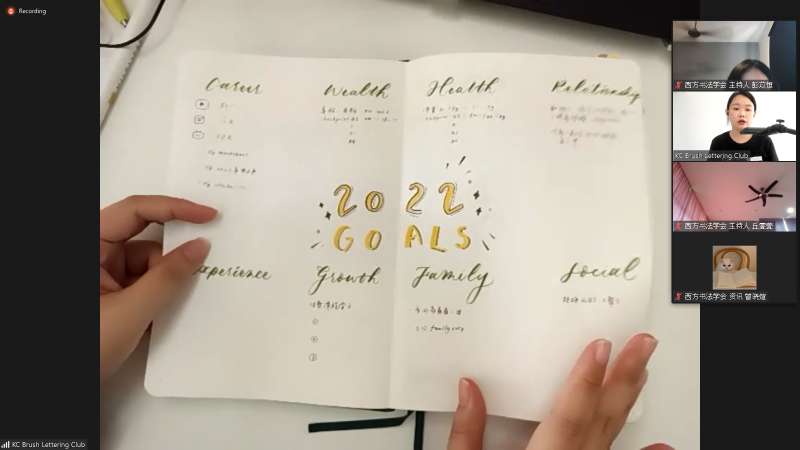
Yearly Goals Example
Ms Pang later displayed her own bullet journal, which included all the sections as listed above along with additional decorations and sections. For example, she added cover pages for each month to indicate the change in theme, along with sections for bills, movies, books etc.
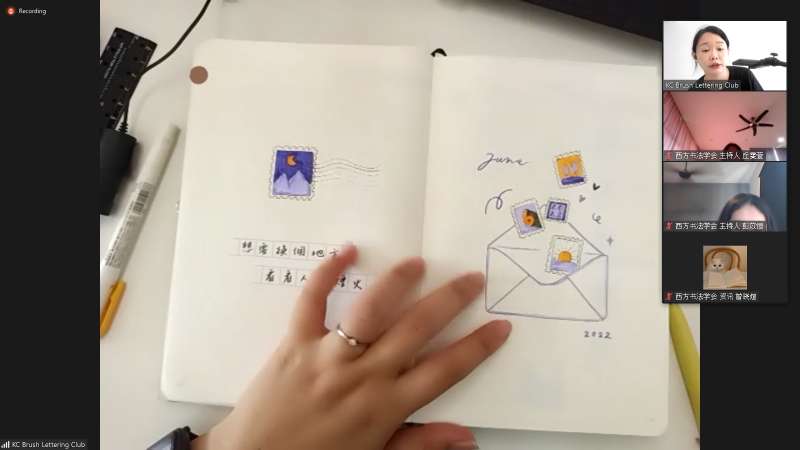
Monthly Cover Page Example
After explaining the basics of bullet journaling, Ms Pang gave a live demonstration of bullet journal designing and even encouraged participants to follow suit. All she used for the demonstration was a blank dotted notebook, a calligraphy pen and a gel pen. She started off with the future log section where she split 2 pages into 6 sections in order to fit in 6 months from July to December. The design was simple and left a lot of room for her to note down important future events.
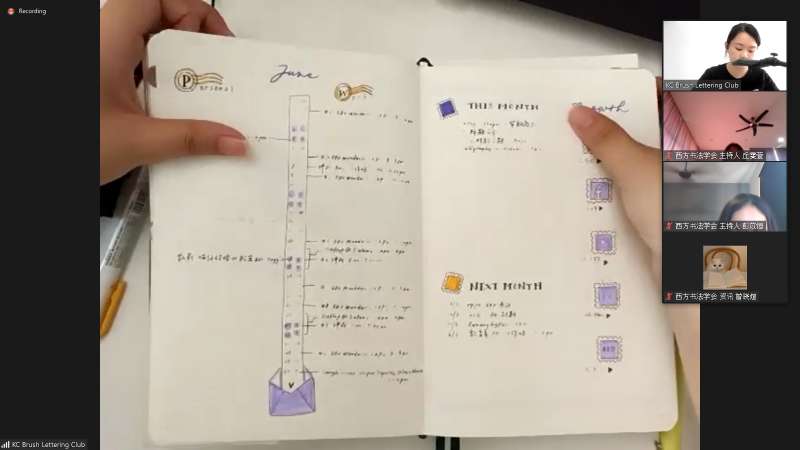
Monthly Log Example
The following pages were used for the monthly logs. Ms Pang used the first page to list out the dates in the month before labeling the days of the week. This was done in a single line since the monthly log was supposed to be a mere overview of important events such as for seminars or birthdays. On the second page, Ms Pang made a list of monthly tasks with checkboxes in front of each point to indicate whether she’d completed them or not.
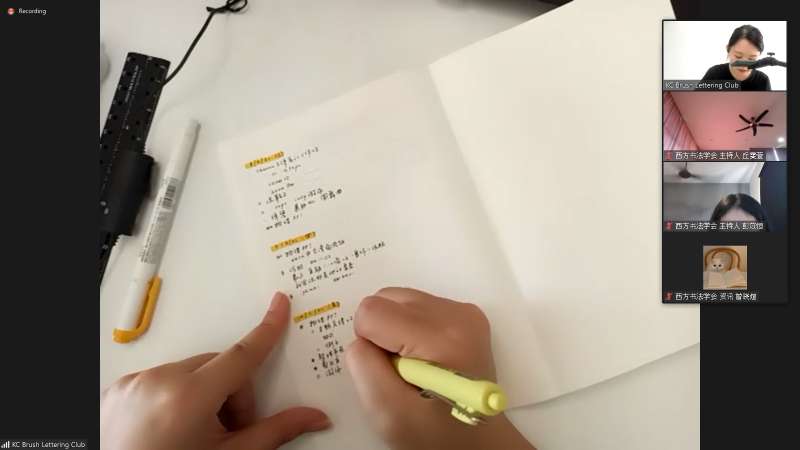
Live Demonstration
Next up were the daily logs in which Ms Pang made detailed and precise to-do lists for each day. She first wrote the date down before adding different tasks and events onto the list using different keys for different types of points. Details were added after each point, like the event time, venue etc. Ms Pang also mentioned that unfinished tasks should be moved over to the next day’s to-do list, and if the task is too laborious, we could split it into different subtasks in order to track progress with more ease. She stated that if there are no tasks for the day, we can choose to write down what happened during the day instead, much like a diary. We could include a spendings list, little notes, fun facts and more.
Finishing up the demonstration, Ms Pang held a quick Q&A session where participants were able to clear any questions they had in mind. A participant asked how they could decorate their bullet journal if they aren’t good at art. Ms Pang responded by saying that the main purpose of bullet journalism is to note down tasks and events, so simple notes should do just fine, but little side doodles could work well as practice. A participant was also curious as to where Ms Pang buys her journal books. Ms Pang not only recommended a brand called “Paperideas”, but also showed more examples of how she uses the books for bullet journaling.
Before ending the workshop, Ms Pang encouraged participants to check out her YouTube channel for more tips and tricks on how to design bullet journals. With that, the fruitful workshop came to a final closing, leaving participants with a newfound interest in bullet journaling.
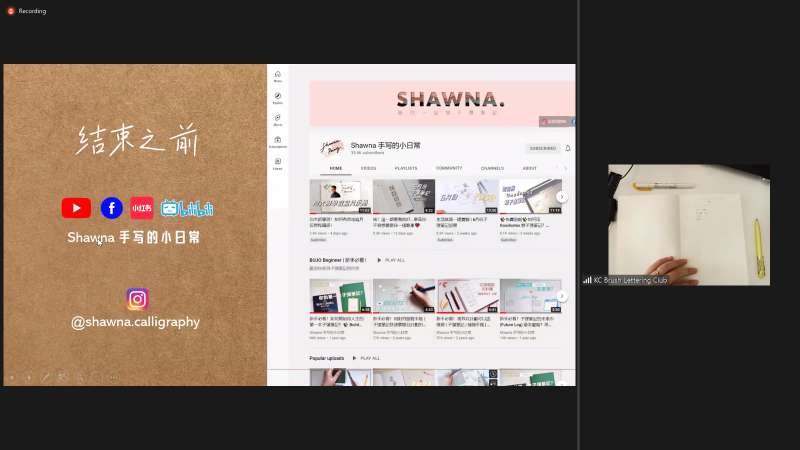
Ms Pang’s YouTube Channel

